We continue our look at the work of Robert Binks with this sequence illustrating “The Shooting of Dan McGrew.” The pictures appeared on a Canadian Broadcasting Corp. television program “around 1964,” Mr. Binks tells me. As you might guess from the complexity of the storefronts in the next picture, the pictures didn’t make up an animation sequence. Instead the camera moved along the drawings.
“Dan McGrew” is one of the best-known poems in the world. It was written by Robert W. Service (1874-1958), who was born an Englishman but settled in Canada at age 21. He began writing poems about frontier life after the bank he worked for stationed him at a branch in the Yukon. Service wrote “Dan McGrew” when he was about 30, a few years before his poetry made him internationally known.
I think the illustrations we see here are splendid, a wonderful combination of lively visual rhythms, skillfully off-center compositions, and affectionately grotesque treatment of an ancient melodrama. Mr. Binks told me by email that he drew them with felt pen markers:
I had a technique of applying the felt ink on one side and then applying the ink on the other side and pulling the color through for an interesting effect.
This is one method — and sometimes I would just work on the one side.
… The characters in the Dan McGrew story were bond paper cutouts, spray glued and applied onto 22 inch by 28 inch colored backgrounds.
I’ll note that all the illustrations in this post are © CBC/Bob Binks, and that the sequence illustrates highlights of the poem; the full text is here. If you want to see more of Mr. Binks’s work, look here for scans of his illustrations for the Ogden Nash collection The Old Dog Barks Backwards and here for the previous two posts in the present series.
And now … the action begins in “The Shooting of Dan McGrew.”
A bunch of the boys were whooping it up in the Malamute saloon;
The kid that handles the music-box was hitting a jag-time tune;
Back of the bar, in a solo game, sat Dangerous Dan McGrew,
And watching his luck was his light-o’-love, the lady that’s known as Lou.
When out of the night, which was fifty below, and into the din and the glare,
There stumbled a miner fresh from the creeks, dog-dirty, and loaded for bear.
He looked like a man with a foot in the grave and scarcely the strength of a louse,
Yet he tilted a poke of dust on the bar, and he called for drinks for the house.
His eyes went rubbering round the room, and he seemed in a kind of daze,
Till at last that old piano fell in the way of his wandering gaze.
The rag-time kid was having a drink; there was no one else on the stool,
Then on a sudden the music changed, so soft that you scarce could hear;
But you felt that your life had been looted clean of all that it once held dear;
That someone had stolen the woman you loved; that her love was a devil’s lie;
And “Boys,” says he, “you don’t know me, and none of you care a damn;
But I want to state, and my words are straight, and I’ll bet my poke they’re true,
That one of you is a hound of hell … and that one is Dan McGrew.”
Pitched on his head, and pumped full of lead, was Dangerous Dan McGrew,
While the man from the creeks lay clutched to the breast of the lady that’s known as Lou.

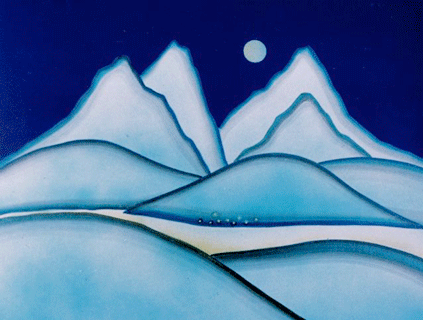

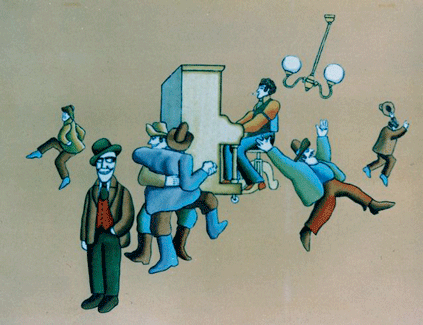
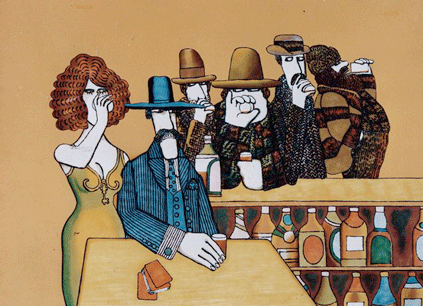
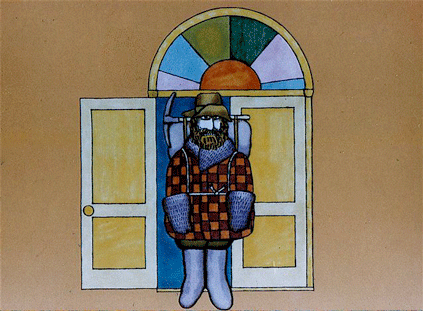

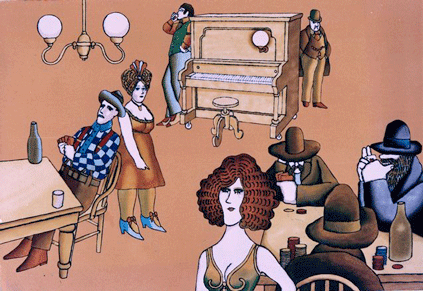
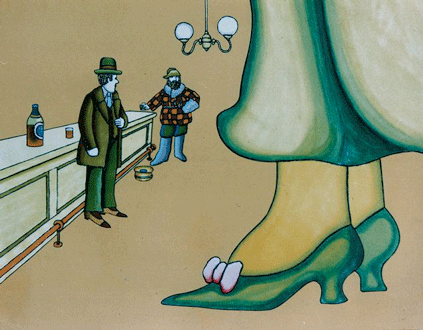
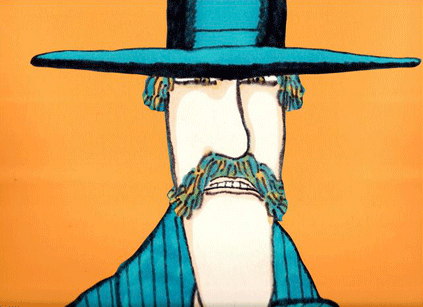
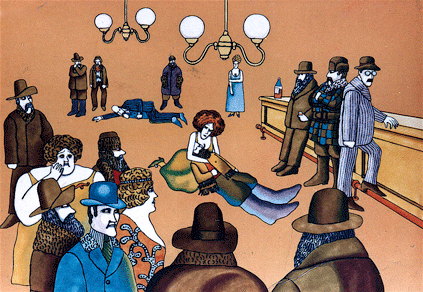
I think these are my favorites so far. I love the giant woman’s feet one.
I go for the “boys were whooping it up” illo. I think the composition is daring and I like the foreground figure (the grinning man with his hand in his pocket, like the fellows you see in old photographs).
Beautiful.
CBC was hospitable to so many graphic experimenters, like Len Lyle and McClaren…